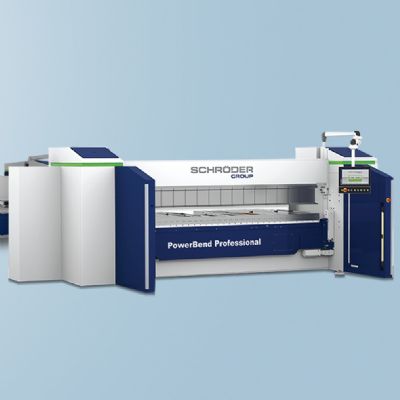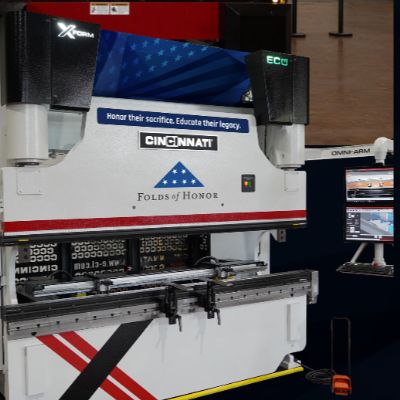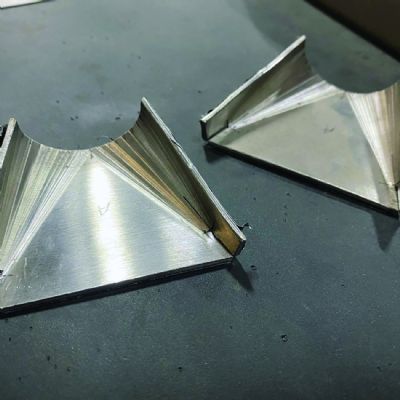High-Speed Stamping — Part 2
November 1, 2007Comments
As an object’s speed increases, kinetic energy also increases. Kinetic energy is expressed as:
KE = (mv2)/2
Where:
KE = kinetic energy
As an object’s speed increases, kinetic energy also increases. Kinetic energy is expressed as:
KE = (mv2)/2
Where:
KE = kinetic energy
m = mass
v = velocity
This equation tells us that the kinetic energy depends on an object’s mass (m) and its speed (v). For example, a car traveling at 20 km/hr. will deliver a greater force and do more work as it hits a tree (or any solid object) than a bicycle moving at the same speed, because the car has greater mass than the bike. Also, a car traveling at 100 km/hr. has four times as much kinetic energy as it does when traveling at 50 km/hr., again having more capability for greater force and work.
Now let’s apply this principle to a mechanical stamping press. Suppose two identical stamping presses are stamping at the same average slide velocity—for simplicity we’ll assign an arbitrary value of 2—but one of the upper dies (M) has twice the mass of the other (m), or M = 2m:
If we let m = 500 and M = 1000 we find:
KE1 = ½ x 500 x 22 = 1000
KE2 = ½ x 1000 x 22 = 2000
Kinetic energy increased linearly with mass; thus when mass doubled, kinetic energy is doubled. If mass were to triple, kinetic energy also would triple.
Now let’s assume that the upper die weights are identical—both equal 500—and both mechanical presses are identical except that the second press has a slide velocity at material impact twice as great as the first. The upper die kinetic energy comparison would be:
KE1 = ½ x 500 x 22 = 1000
KE2 = ½ x 500 x 42 = 4000
Here, kinetic energy increases proportionally with the square of its speed; when speed doubles, kinetic energy increases by a factor of four. If speed were tripled, kinetic energy would increase by a factor of nine.
So why is all of this so important?
Some of the kinetic energy from the press will be transferred and expended in the form of mechanical energy to deform the sheetmetal into the actual stamping—something we desire. Some energy will be transformed into less desirable forms like heat energy, dynamic deflections, vibrations associated with impact force and energy transferred into the press frame. It is the increased kinetic energy and impact vibrations associated with high-speed stamping operations that must be understood and controlled in order to prevent detrimental damage to the tooling and the press.
Also, consider a typical mechanical-press cycle: the ram is accelerated from rest (zero velocity) at top dead center. As the ram is driven downward, it reaches a maximum velocity at approximately 90 deg. of crankshaft rotation. After reaching peak velocity the press begins to decelerate the ram until it eventually reaches zero velocity at bottom dead center and then immediately begins to accelerate the ram again, in the opposite direction, on the upstroke. Because the ram motion creates inertia force —the greater the press speed the greater the inertia force—the ram wants to continue its downward travel as the press crank tries to accelerate it in the opposite direction on the upstroke. This places tremendous stress on press components, especially the pitman connections. Depending on the magnitude of inertia forces and the rigidity of the machine design, the pitman will elongate, effectively reducing shut height. The shut-height reduction introduces additional stresses such as impacting the large end of the pitman on the crank journal, introducing additional frame deflections.
Material fracture also can create higher reverse-tonnage (snapthrough) forces. These forces transfer additional kinetic impact energy into the structure of the press in the form of vibrations. As press speeds increase there is less time to dissipate these vibrations and they can eventually reach critical levels where magnified stresses are produced. Such stresses can create a range of nuisance problems, from the loosening of nuts and bolts to catastrophic occurences such as breakage of major press components like crankshafts and tie rods.
If problems like these can have such a potential detrimental affect on the press, what is happening to our relatively less robust tooling? We’ll explore that aspect in next month’s column. In the meantime, if you want to learn more about the dynamic effects of high-speed stamping on your press and vibration-severity-monitoring technology, contact your press manufacturer or the Applied Research Center at the Minster Machine Co.
Here’s your chance to help other MetalForming magazine readers.
My September column, Flange or No Flange, was derived from the work of Don Eary and Edward Reed in their book, Techniques of Pressworking Sheet Metal, which I did not properly credit in that column. Long considered one of the most comprehensive books in its field, it—like many die design handbooks—does not address a very common question associated with multiple redraws: How do you produce a large flange free from redraw marks that also is flat enough to serve as a sealing surface? This is particularly important for cylindrical cups or vessels required to seal liquids or gasses.
I have received several e-mail messages asking this very question, for which I have no real solution. I’m sure many readers have struggled with this very issue and some have likely found some reliable solutions. I invite readers to e-mail me with ideas and/or success stories and I will print responses in a future column. When we can help each other find solutions to common problems we help to build, nurture and perpetuate a stronger industry. MF
Technologies: Bending
 Bending
Bending Bending
Bending Bending
Bending